In today’s digital world, clients expect more than just a presence on one advertising platform—they expect complete visibility across every channel their customers use. The multi-platform advertising landscape is no longer a nice-to-have; it’s a core expectation for brands that want to reach audiences with precision, consistency, and measurable ROI.
But for most marketing agencies, meeting these expectations isn’t easy. Managing campaigns across Google, Facebook, Instagram, LinkedIn, TikTok, and emerging platforms requires deep technical expertise, dedicated creative resources, and advanced tracking systems. Balancing all that while maintaining profit margins and delivering consistent results can quickly overwhelm even experienced teams.
That’s where white label PPC services come in. By partnering with specialists who handle the complex, platform-specific aspects of campaign management, agencies can expand their service offerings, improve performance, and keep costs under control—without needing to build entire departments from scratch.
What Is Multi-Platform Advertising?
Multi-platform advertising goes far beyond running campaigns on Google and Facebook. It encompasses a comprehensive approach that includes search, social, video, display, programmatic, and even connected TV advertising. Each platform serves different purposes in the customer journey and requires specialized knowledge to maximize results.
Search and Shopping Platforms like Google and Bing capture high-intent users actively looking for solutions. These platforms excel at converting ready-to-buy customers but require expertise in PPC keyword research, bid management, and shopping feed optimization.
Social Media Platforms, including Facebook, Instagram, LinkedIn, and TikTok, focus on discovery and engagement. Users on these platforms aren't necessarily looking to buy immediately, so campaigns must be crafted to build awareness and nurture interest over time.
Emerging Platforms such as Pinterest, Snapchat, and Reddit offer unique opportunities to reach niche audiences. Reddit's community-based targeting allows brands to connect with highly engaged users, while Pinterest excels at capturing users in the inspiration phase of their buying journey.
Cross-Device Integration ensures campaigns follow users across smartphones, tablets, desktops, and connected TVs. This omnichannel marketing approach requires sophisticated tracking and attribution models to understand the full customer journey.
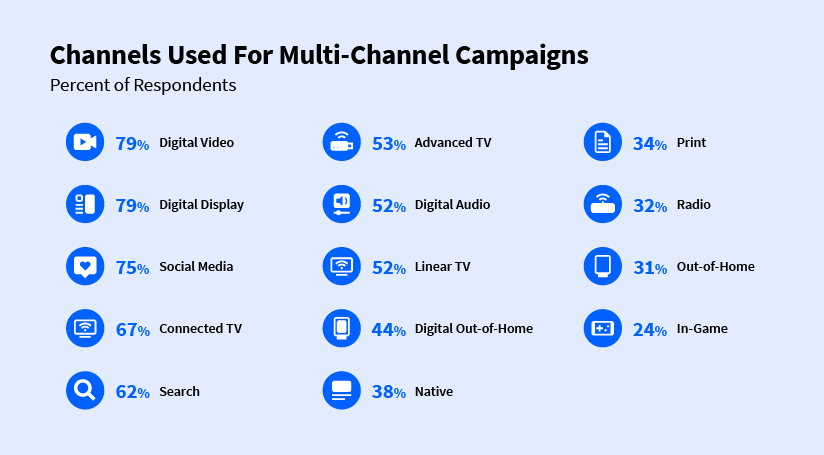
Image Source: StackAdapt
The key challenge is that each platform operates differently. LinkedIn users respond to professional, B2B-focused content, while TikTok users engage with entertaining, authentic video content. Successful multi-platform campaigns require a deep understanding of platform-specific user behavior and preferences.
Why Clients Now Demand Multi-Platform Ads?
As client expectations evolve, a single‑channel campaign is increasingly seen as a liability rather than a strength. Here are the main reasons clients now insist on multi‑platform strategies:
- Fragmented Audience Attention: Consumers today hop across devices and apps. In 2025, data shows the typical user actively visits about 6.84 different platforms in a month. This means by the time someone converts, they’ve likely seen the brand multiple times across different channels. Limiting your presence to one or two platforms risks missing critical touchpoints.
- Platform‑Specific KPIs: Many clients want to see performance broken down by channel—not just aggregate numbers. They expect ROAS, cost per acquisition, or conversion rates for Search, Social, Display, TikTok, etc. It’s no longer enough to say “overall ROAS was 4×”; they want to know which platforms drove that number and why.
- Risk Aversion & Visibility: Clients often worry they’re leaving money on the table by skipping platforms. They expect agencies to “be everywhere”—covering all meaningful audience touchpoints without bloating internal resources. If a competitor appears on a new or trending platform and drives success, clients demand that their campaigns also be nimble enough to pivot.
- Audience Journey Complexity: Modern buyer journeys are non-linear. A consumer may first discover a brand via reels, then research via Google Search, revisit via display or email, and finally convert via a shopping ad. A campaign that treats platforms in isolation can’t capture the full path—and will underinvest or misattribute effort along the way.
- Performance Accountability: Clients now track not only final conversions but micro‑conversions: email signups, content downloads, product views, and add-to-carts. They want to see cross-channel ROI—how earlier steps in the funnel influence final sales. Agencies must provide a full picture of performance, not just a narrow lens.
- Data‑Driven Expectations: Clients want detailed insights, not just high-level summaries. They expect to see which audiences, creatives, or messaging worked on each platform. They demand transparency and the ability to drill into numbers themselves. Incomplete or opaque reporting no longer cut it.
- Behavioral Trends & Stats: Recent research supports the value of multi-platform exposure. Companies with diversified social media strategies, keeping a presence across multiple channels rather than focusing narrowly, achieved 2% to 5% higher total web sales. Another analysis showed cross-platform campaigns led to a 25% increase in purchase intent when properly sequenced across screens.
These findings show that overlapping messages across platforms reinforce brand awareness, improve trust, and increase the likelihood of purchase.

Case Insight (Retail Client Example)
A retail client insisted on synchronized campaigns across search, shopping, and social channels. They required consistent creative themes, messaging alignment, and coordinated targeting across all touchpoints.
The agency had to navigate the challenges of differing ad formats (shopping feeds vs. dynamic social vs. text search), align budgets, and maintain brand coherence while optimizing for each platform’s strengths. This case illustrates how complex and resource-intensive multi-platform execution can be—but is now treated as a baseline expectation.
Why Agencies Struggle with Multi-Platform Demands?
Running effective multi-platform advertising campaigns sounds good in theory—but in practice, most agencies face deep operational and structural challenges that limit their ability to deliver consistent results. Here’s why:
- Specialization Overload: Agencies often structure their teams by platform—one person manages Google Ads, another handles Meta, and another focuses on LinkedIn or TikTok. While this setup ensures platform expertise, it also creates silos. Each specialist operates independently, leading to bottlenecks in strategy alignment, campaign execution, and reporting. When campaigns need to be coordinated across six or more channels, communication slows down and performance suffers.
- Inconsistent Attribution and Measurement: Cross-platform attribution remains one of the biggest hurdles. Many agencies still rely on basic last-click attribution, which credits the final ad interaction before conversion. This outdated model hides the real influence of upper-funnel campaigns like social and video. As a result, agencies lose visibility into how each platform contributes to ROI, leading to misinformed budget decisions and inconsistent reporting to clients.
- Creative Production Fatigue: Every platform demands its own creative format, tone, and optimization strategy. Scaling ad creatives for multiple networks—Google, Facebook, Instagram, LinkedIn, TikTok, YouTube, and more—quickly overwhelms internal teams. Designers and copywriters can only produce so much at once, leading to slower campaign launches and creative fatigue. Over time, this can cause performance dips simply because the creative refresh cycle can’t keep up with platform demands.
- Emerging Platform Blind Spots: The digital ad landscape evolves fast. Platforms like TikTok, Reddit Ads, and emerging retail media networks require specialized knowledge and constant learning. Many agencies struggle to stay ahead, often choosing to ignore these platforms altogether or experimenting without the proper expertise. This results in missed opportunities and subpar performance on channels that could otherwise drive growth.
- Metric Insight: Performance Decline Across Platforms: According to an industry survey in 2024, agencies relying solely on in-house PPC teams often struggle to maintain consistent CTRs and ROAS when managing campaigns across more than three platforms. The lack of unified expertise and integrated tools contributes to declining efficiency and uneven performance metrics.
- Cross-Platform Expertise Gaps: It’s rare for an in-house team to include specialists for every platform—especially emerging ones. Instead, a few generalists are expected to handle multiple networks, each with different ad structures, bidding strategies, and creative nuances. This gap often shows up in weaker results on newer or less familiar platforms, reducing the overall campaign impact.
- Time-Intensive Campaign Setup: Running ads across multiple platforms means managing separate campaigns, ad sets, creatives, budgets, and reporting dashboards. Each one has its own interface and rules, which multiply setup and optimization time. What should take hours can stretch into days, delaying go-lives and slowing down performance testing.
- Inefficient Tools and Fragmented Reporting: Many agencies rely on a patchwork of tools for campaign management and reporting. One dashboard for Google, another for Meta, a third for analytics, and maybe a spreadsheet to tie it all together. This fragmented system creates data discrepancies, slows reporting, and makes it difficult to get a unified view of campaign performance.
- Client Expectation Management: Finally, agencies often struggle to explain performance differences across platforms. A TikTok campaign behaves very differently from a Google Search campaign—but clients don’t always understand why. Without clear education and communication, this leads to frustration, misaligned expectations, and a perception that the agency is underperforming.
How White Label PPC Solves Multi-Platform Challenges?
White label PPC services offer agencies immediate access to platform specialists without the time and cost investment required to build internal expertise. This partnership model allows agencies to offer comprehensive multi-platform services while maintaining focus on their core competencies.
- Dedicated Platform Specialists ensure each campaign receives expert attention. Instead of one generalist managing Google, Facebook, and TikTok campaigns, white label providers assign platform-specific experts who stay current with the latest features, best practices, and optimization techniques. This specialization typically results in 15-30% better performance compared to generalist management.
- Advanced Attribution and Analytics come standard with quality white label PPC services. These providers invest in sophisticated tracking and reporting tools that most agencies can't justify purchasing independently. Clients receive detailed cross-platform attribution reports showing exactly how each channel contributes to their success.
- Scalable Creative Production eliminates the bottleneck that prevents many agencies from expanding across platforms. White label providers typically maintain creative teams experienced in producing platform-optimized content at scale. This capability allows agencies to launch campaigns quickly without overwhelming internal resources.
- Unified Reporting Systems simplify client communication by presenting multi-platform performance in easily understood dashboards. Instead of juggling separate reports from each platform, agencies receive comprehensive summaries that highlight key insights and optimization opportunities.
- Early Access to New Features gives agencies competitive advantages. Established white label PPC providers often participate in platform beta programs, gaining early access to new advertising features and optimization tools. This early access translates into first-mover advantages for agency clients.
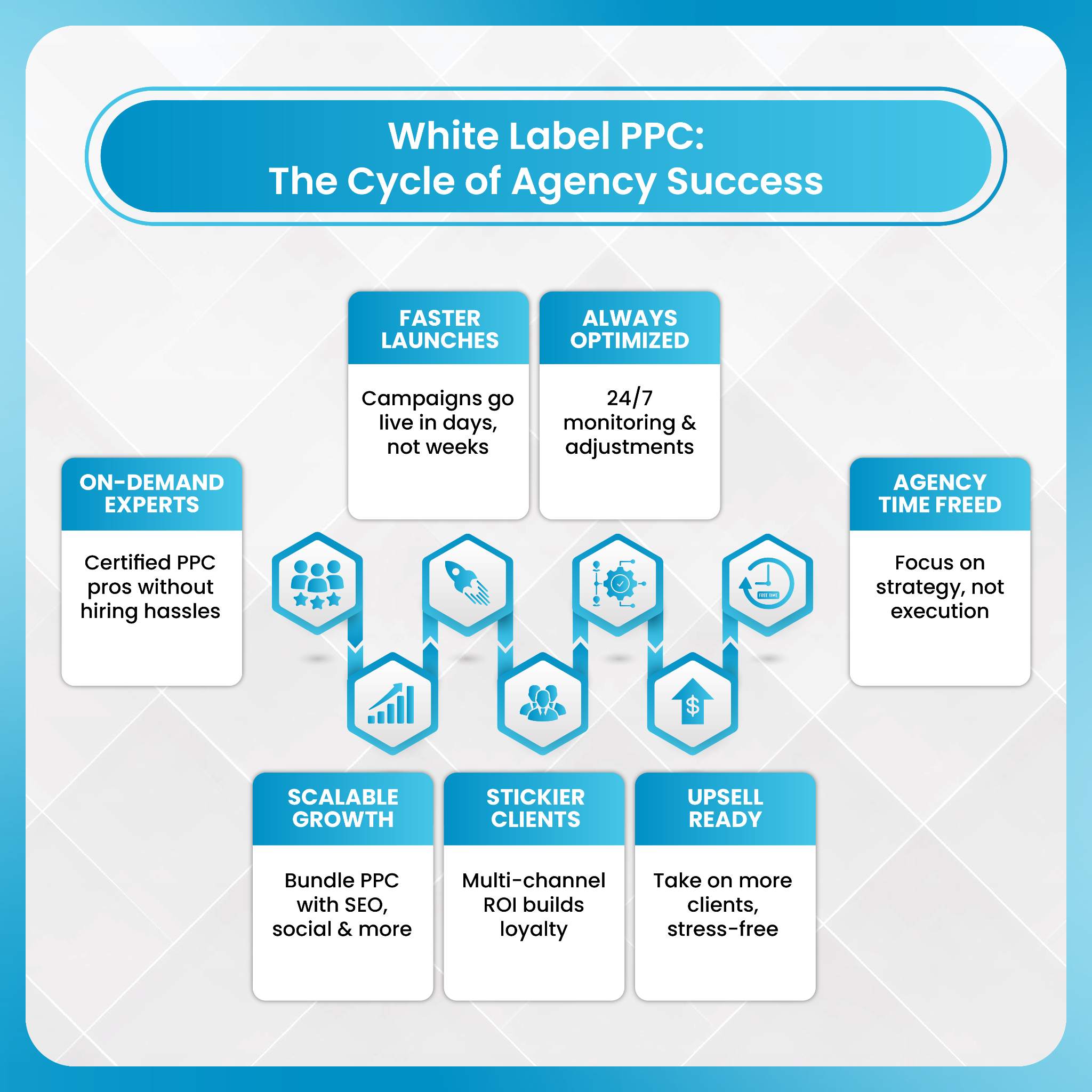
DashClicks exemplifies how white label PPC services can transform an agency's multi-platform capabilities. Their platform provides agencies with access to specialists across Google Ads, Facebook, Instagram, LinkedIn, TikTok, and other major platforms. The unified dashboard combines performance data from all channels, giving agencies clear visibility into cross-platform campaign effectiveness.
More importantly, DashClicks handles the technical complexity of multi-platform management while allowing agencies to maintain direct client relationships and brand their services appropriately.
Measuring Multi-Platform Success
Running campaigns across several platforms only works if you can measure what’s actually driving results. Without clear, unified reporting, agencies risk misallocating budgets, missing optimization opportunities, and losing client confidence. Measuring success in a multi-platform environment requires both a holistic approach and the right tools.
1. Holistic Metrics: Instead of looking at each platform in isolation, agencies need to focus on how all channels contribute to the customer journey. Multi-touch attribution models show the full picture by assigning credit to every meaningful interaction, not just the last click. Tracking return on ad spend (ROAS) by platform, applying frequency caps to prevent ad fatigue, and monitoring engagement rates for each channel together create a more accurate measure of campaign health and efficiency.
2. Client-Facing Dashboards: Clients expect transparency and simplicity. A unified dashboard that combines data from Google Ads, Meta, LinkedIn, TikTok, and other platforms helps agencies present results clearly and consistently. Instead of juggling multiple reports, clients can see how each channel contributes to overall goals in one place. This not only builds trust but also saves time during review meetings and performance updates.
The white label dashboard by DashClicks offers agencies a unified space to share reports, track progress, and manage client communication in real time. The dashboards allow clients to view key campaign metrics, files, and updates through a clean, organized interface.
3. Trend Analysis and Predictive Insights: Data isn’t just for reporting—it’s for forecasting. By analyzing historical performance data, agencies can identify seasonal patterns, platform-specific strengths, and creative trends. Predictive analytics takes this a step further by projecting future ROI and helping plan budget distribution across platforms. This kind of forward-looking insight makes campaign strategies smarter and improves both upsells and client retention.
4. KPI Standardization: Every platform measures success differently—clicks, conversions, views, or engagement—but without standardized KPIs, it’s nearly impossible to compare performance across channels. Establishing consistent metrics, such as cost per acquisition (CPA), conversion rate, and ROAS, allows agencies to benchmark campaigns fairly and optimize with confidence.
Expert Insight:
“Agencies that cannot visualize multi-platform performance cannot retain clients.”
— Digital Marketing Analyst, 2024
In a multi-platform world, success depends on the ability to connect data, identify insights, and communicate results clearly. Agencies that master unified measurement will outperform those that treat each platform as a separate silo.
Building Long-Term Client Relationships
Multi-platform advertising capabilities have become essential for client retention in competitive markets. Agencies that can't deliver comprehensive cross-platform strategies risk losing clients to more capable competitors.
- Competitive Differentiation emerges naturally when agencies can offer genuine multi-platform expertise. While many agencies claim multi-platform capabilities, few can deliver the specialized knowledge and optimization strategies that drive superior results across all channels.
- Client Confidence increases when agencies demonstrate deep platform knowledge and can explain the strategic rationale behind cross-platform campaign decisions. Clients trust agencies more when they see evidence of specialized expertise rather than generic approaches applied across all platforms.
- Revenue Growth opportunities multiply when agencies can expand client campaigns across additional platforms. Instead of losing budget to other agencies, comprehensive multi-platform capabilities allow agencies to capture larger shares of client advertising spend.
- Operational Efficiency improves when agencies partner with white label PPC providers rather than trying to build internal expertise across all platforms. This efficiency translates into better margins and more time to focus on strategic client relationships.
Taking Action on Multi-Platform Opportunities
The multi-platform advertising landscape will only become more complex as new platforms emerge and existing channels evolve their advertising offerings. Agencies that invest in comprehensive multi-platform capabilities now will be better positioned for long-term success.
White label PPC agency offer the fastest path to multi-platform expertise without the risks and costs of building internal capabilities across all channels. Quality providers like DashClicks combine platform specialists, advanced analytics, and unified reporting systems that enable agencies to deliver superior results while maintaining operational efficiency.
The agencies that thrive in the coming years will be those that embrace multi-platform strategies and invest in the tools and partnerships needed to execute them effectively. The question isn't whether to pursue multi-platform capabilities—it's how quickly you can implement them to meet evolving client expectations.
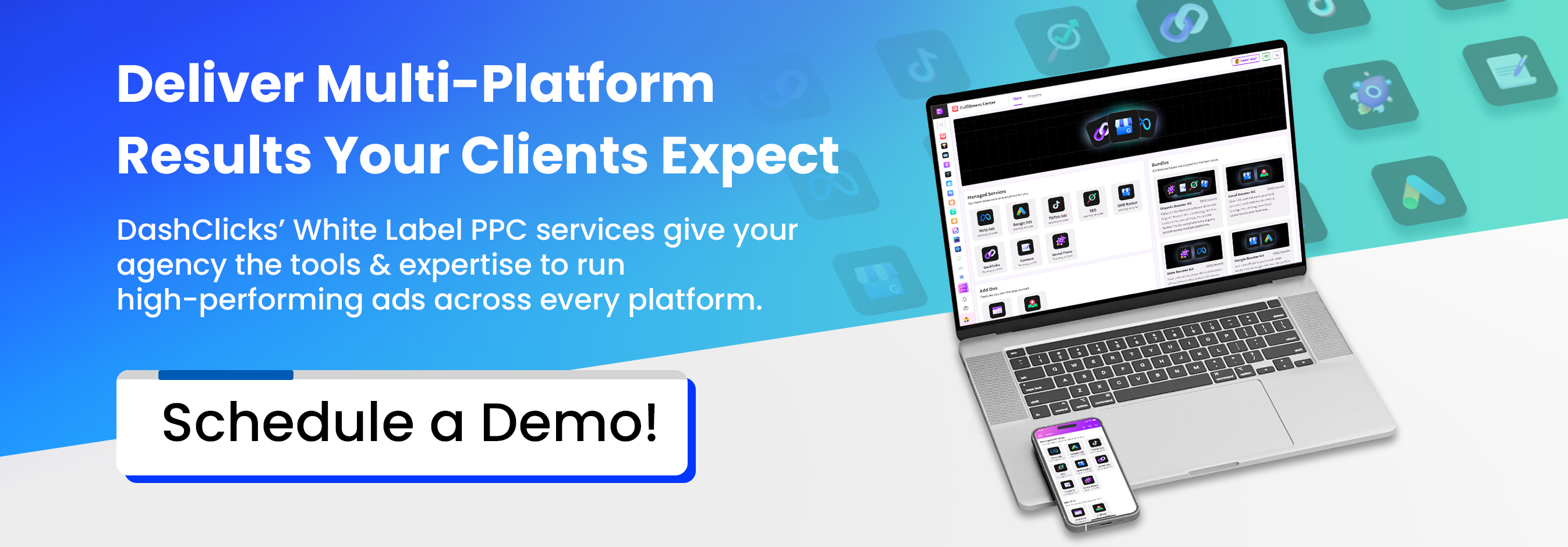


.svg)
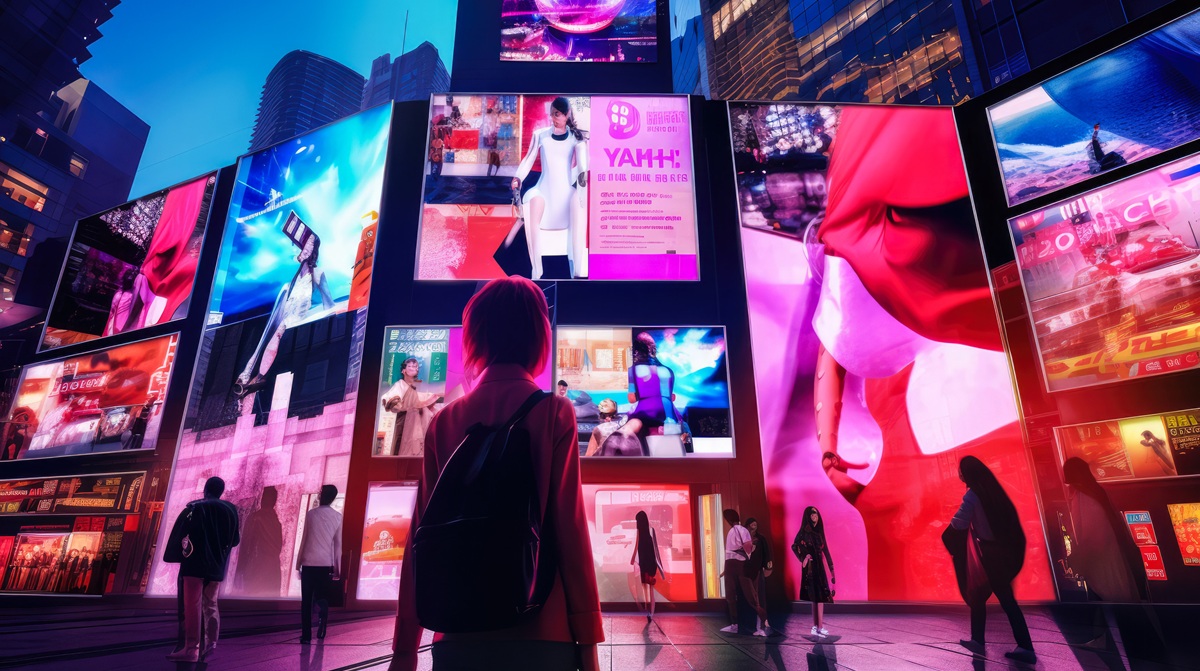
.svg)
.svg)
.svg)
.svg)
.svg)
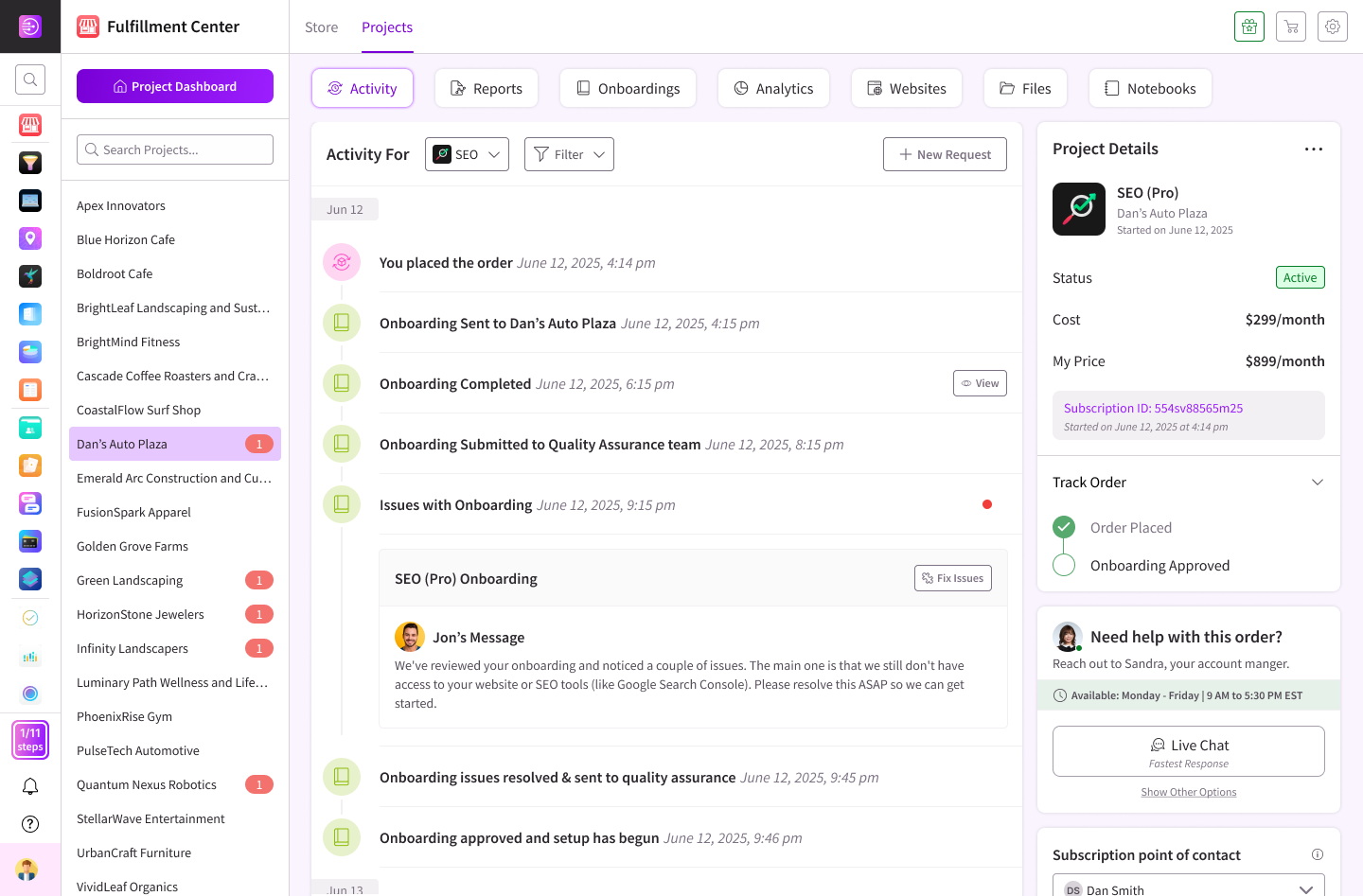
.svg)




.svg)
.svg)
.svg)
.svg)
.svg)